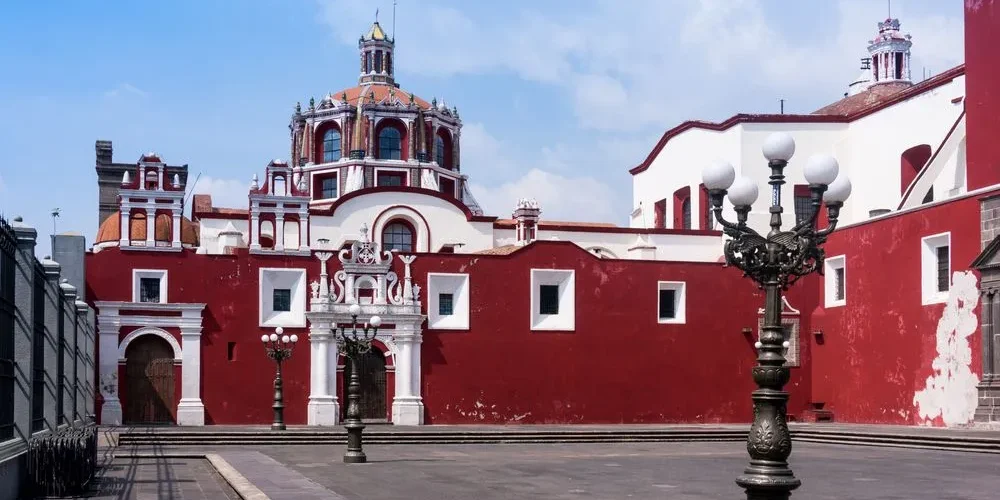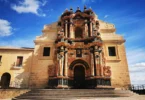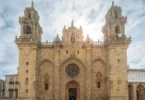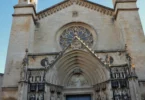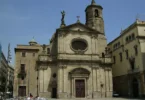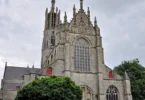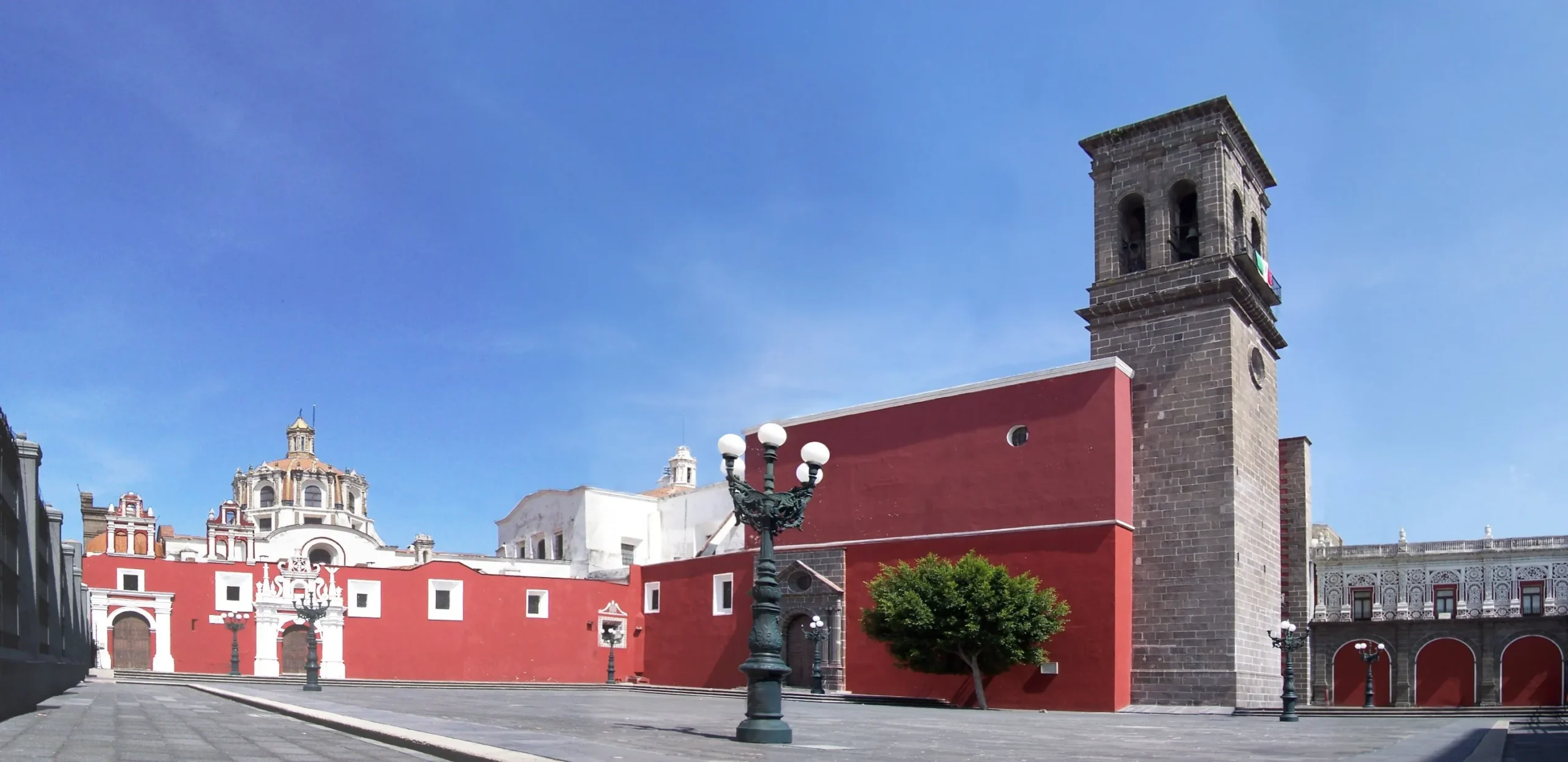
Introduction
The chapel of the Virgen del Rosario is the chapel attached to the Temple of Santo Domingo in the city of Puebla, Mexico. Work from the 17th century, the summit of the New Spain baroque, it was described in its time as The House of Gold, as well as the eighth wonder of the world by Fray Diego de Gorozpe, in a print from 1690.1 It constitutes the most outstanding example of the New Spain baroque and a of the greatest artistic-religious achievements in Mexico. It is located on the pedestrian avenue 5 de Mayo number 407.
The Capilla del Rosario (Rosary Chapel), on the south side of the church’s main altar, is the most magnificent aspect of this church’s interior. Santo Domingo church dates from the late 16th century, but the Rosary Chapel was added later; it was built between 1650 and 1690
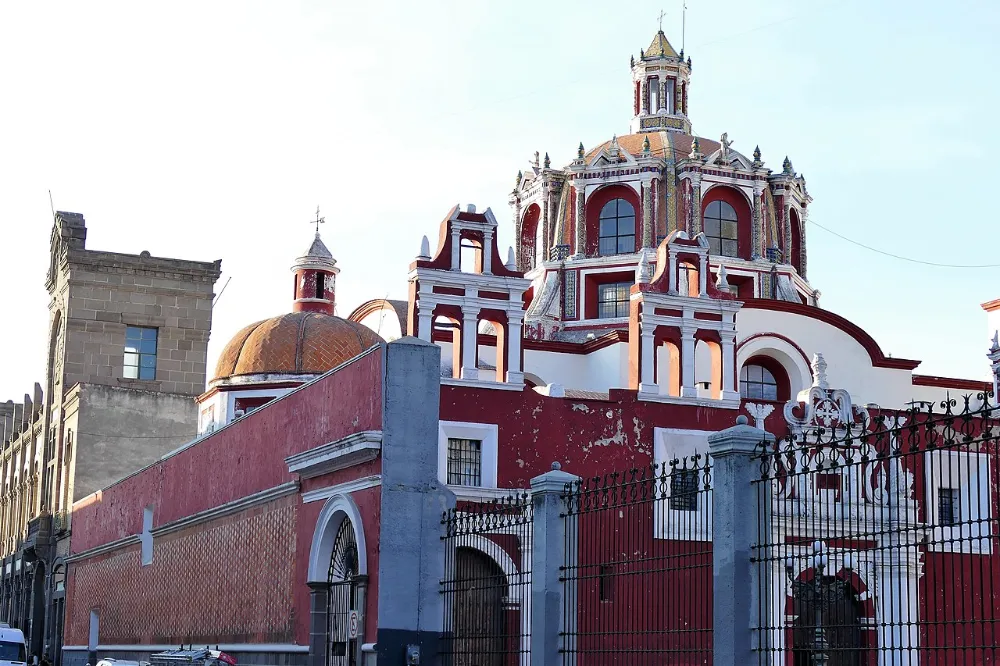
The cult of the Virgin of the Rosary was promoted by the order of Dominican preachers, who dedicated a chapel to her devotion in each of their convents. In Mexico it was no exception when the first religious of the order arrived in 1526, but it was not until the year 1531 when they began the construction of their first important temple in Puebla, which is also dedicated to the archangel San Miguel, however the chapel of the Rosario was conceived until 1650 and consecrated in 1690.
However, it was the first in Mexico dedicated to the Virgin of the Rosary. Its construction served a double purpose: to worship the Virgin and to teach the faithful how to pray the Holy Rosary. It was conceived by the Dominican brother Juan de Cuenca, who began its construction in 1650,3 but given the magnitude of the work, it was not completed until 1690 by two other Dominicans, brother Agustín Hernández and brother Diego de Gorozpe, who dedicated to the distinguished bishop of Puebla of the Council of His Majesty Manuel Fernández de Santa Cruz,4 and celebrating its consecration on April 16, 1690, to coincide with the date on which the City of Puebla de los Ángeles was founded. The celebration lasted 8 days (La Octava),5 with a sermon, processions, masses and events being pronounced in each of them, turning it into a great scene of joy.
The decided impulse to the teaching of the Holy Rosary and the favorite devotion to the Virgin of Our Lady of the Rosary, which was given to them in the 17th century, explains the complexity of the great work, which as soon as it was completed and classified as the eighth Wonder of the World.
From May 1967 to the same month of 1971, a team of restorers sponsored by the Mary Street Jenkins Foundation carried out restoration work on the entire Chapel
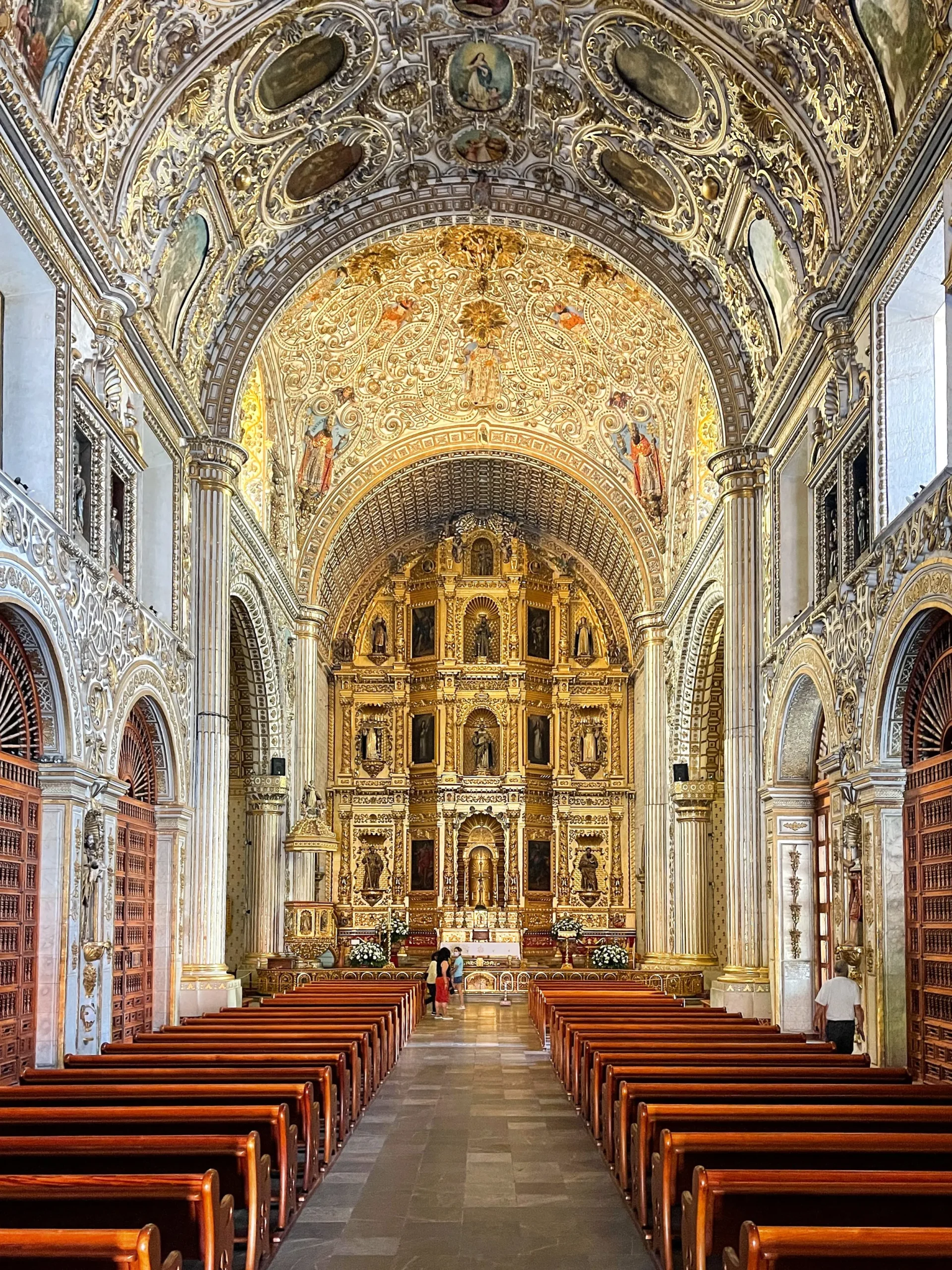
The plant is arranged in the shape of a Latin cross, with short arms and head. The nave is divided into three sections and its vault is barrel-shaped with lunettes of the same shape as the arms of the transept, it has a narrow dome with a drum and above it some windows and in the middle half others, whose purpose is to provide lighting to the sumptuous cypress just below. The interior of the chapel is majestic, where the architectural structures have been covered in every corner that can be seen with golden stucco reliefs, in order to exalt the religious feeling.
The side walls of the nave are symmetrically covered by large canvases by the painter José Rodríguez Carnero (1649-1725), with themes alluding to the Joys of the Virgin. The paintings are in a chiaroscuro style that contrasts with the luminous and clear ones that adorn the cruise, by the same author. The lower part of the paintings is adorned with a lambrín of Talavera Puebla tiles.
In the transept there are other paintings with themes also related to the life of the Virgin, as well as another large one that crowns the apse of the chapel and is dedicated to the Glorification and Triumph of the Rosary. The reliefs that cover the walls, pilasters and vaults have motifs not only of the vegetal, animal or angelic order but also of the symbolic-religious order. The Chapel is decorated with gilded stucco, prepared with a base of flour with egg white and water and covered with 24-karat gold sheets,2 like many baroque decorations in the capital of Puebla.
On the altar stands the throne of the Virgin, with a baldachin carved by the Spanish master Lucas Pinto. The Chapel of the Virgin of the Rosary in Puebla City, Mexico – built between 1531 and 1690.
Cover
The access door is located in the left transept of the temple, and its austere baroque design contrasts with the richness of the interior. It has a padded semicircular arch, as well as in the thread and in the jambs, slightly flared and framed by Tuscan pilasters and Corinthian columns. The arch ends with something similar to a balcony with a window between pilasters.
Interior
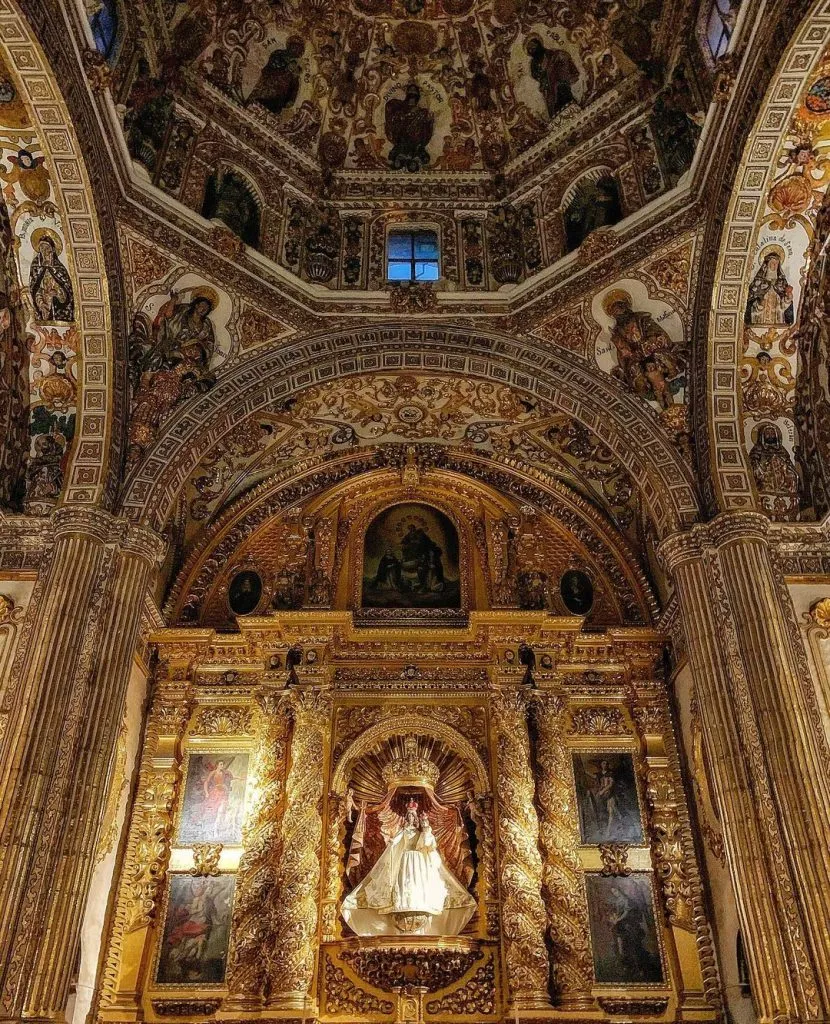
The chapel is characterized by having a Latin cross plan with short arms and heads. It is a dazzling example of the 17th century New Spain baroque style, and a setting for faith, where each element has a precise meaning. In the vault, representations of the three theological virtues are immersed in the foliage: Faith, Hope and Charity. We find sixty angels placed around the circumference that forms the dome and the main vault, each one in a different expression, some are just heads and/or others are full-body images. A detail to highlight is that in the area designated for the choir and the organ, we find angels who seem to be playing musical instruments and singing songs.
Paintings
On the sides of the nave, six large canvases by the painter José Rodríguez Carnero are displayed, which allude to the “joys” of the Virgin: the Assumption, the Visitation and the Birth. In front of them on the left side of the nave: Adoration, the presentation in the Temple and Jesus among the doctors, scenes that represent the key moments in Mary’s human and earthly life. The lower part of the walls is covered with a superb lambrín of Talavera tiles from Puebla, in the upper strip of which small heads of cherubs stand out alternating with the Dominican shield.
Cruise
Although their arms are very short, they present the same exuberant decoration on the nave. On the left side you can see a painting of the Assumption of Mary along with carved carvings of Saint John and Saint Matthew; higher up surrounded by flowers and foliage, Santa Isabel and San José. On the right arm is a painting with the Coronation of Mary and the figures of Saint Mark and Saint Luke; In the finish next to the window, you can see San Joachim and Santa Ana. The tribute to the evangelists is due to the fact that they were the first to speak of the Virgin, whose family appears here surrounded by angels (praise), Flowers ( offerings), birds (music) and pelicans (the symbol of Christ).
Apse
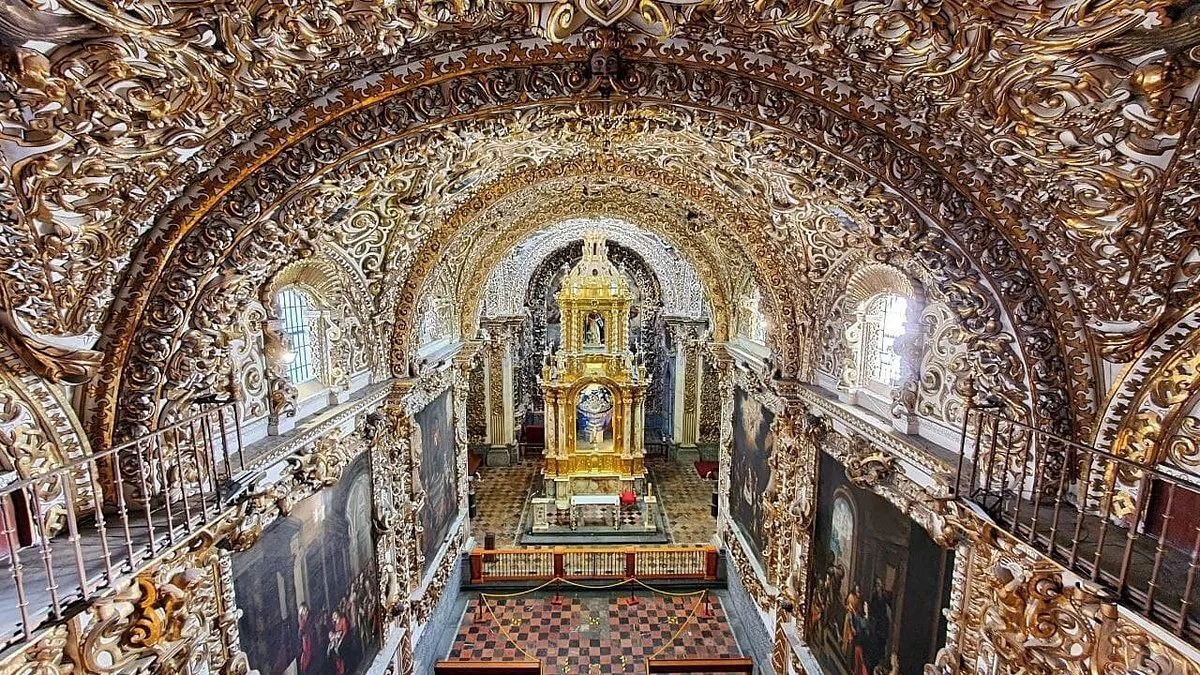
It contains a huge painting dedicated to the Glorification and Triumph of the Rosary, in which you can see the Virgin crowned with roses. Together with the paintings in the transept, it constitutes a descriptive triptych of the heavenly life of Mary, who after ascending to heaven and being crowned appears on earth to distribute the Rosary.
Altar
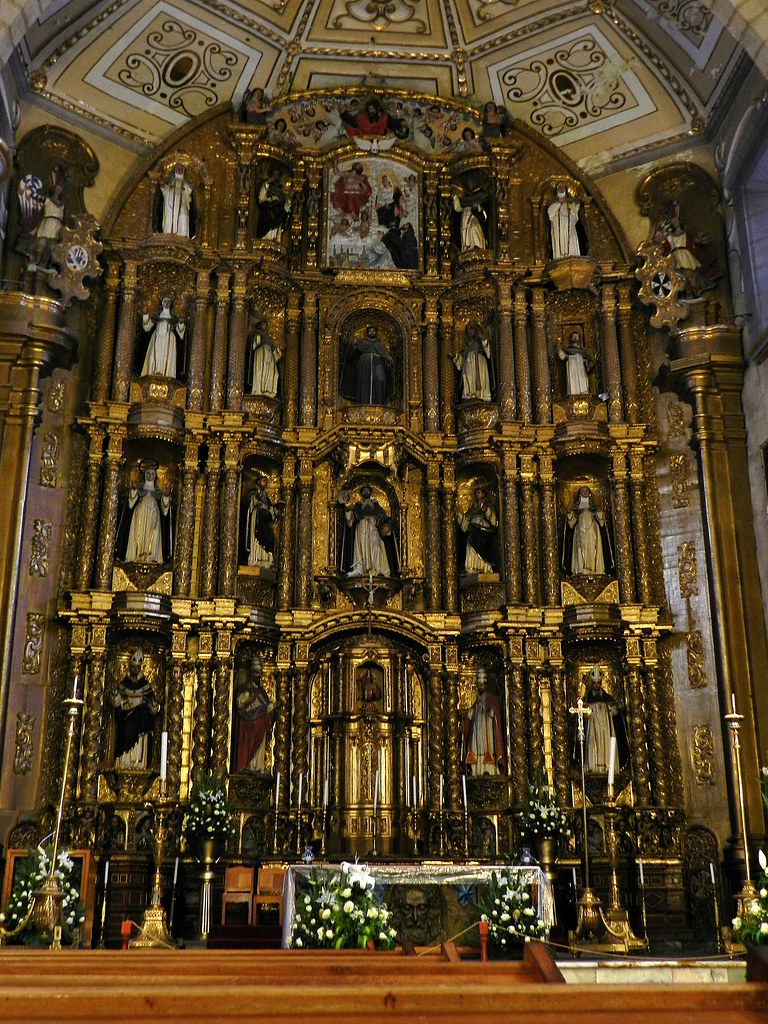
This place is evocative of the interrelation between religious architecture and its symbolism: the square formed in the transept represents the earth, the octagonal base of the dome recreates rebirth after death, and its perfect curvature represents the celestial vault, symbol of paradise.
Cypress
The cypress tree under the drum dome that protects the Virgin of the Rosary is made up of 12 Corinthian columns at the base made of Tecali marble, representing the apostles. In the first body you can see some Dominican saints, and in the second twelve beautiful Solomonic columns covered with roses and lilies that frame Saint Dominic. The saints recessed into the ceiling niches hold clusters of flowers, four decorative ribs are embraced by plants and are arranged in the shape of a vine. Also, there are moldings with high relief of plants typical of the region, as if to remind us of the fertility and benefits of this land. There is even a small one that iconically represents the king of stars. At the top of the lantern is Saint Gabriel the Archangel, the figure that completes this grandiose baroque work signed by Lucas Pinto.
Choir
Here you can see a relief in which there is a group of children with musical instruments, accompanied by angels and under the direction of God the Father.
Prayer to the Virgin of the Rosary
Oh Mother and most clement Virgin of the Rosary! You who planted in the Church, through your privileged son Domingo, the mystical tree of the Holy Rosary, make us all embrace your holy devotion and enjoy its true spirit; so that those mystical roses are medicine on our lips and hearts, for sinners and an increase in grace for the righteous. Amen.
Conclusion
The Rosary Chapel remains one of the most important and sumptuous New Spain baroque jewels on the continent, palpable proof of the care taken in the ornamental details, which would serve the process of evangelization to the indigenous people.
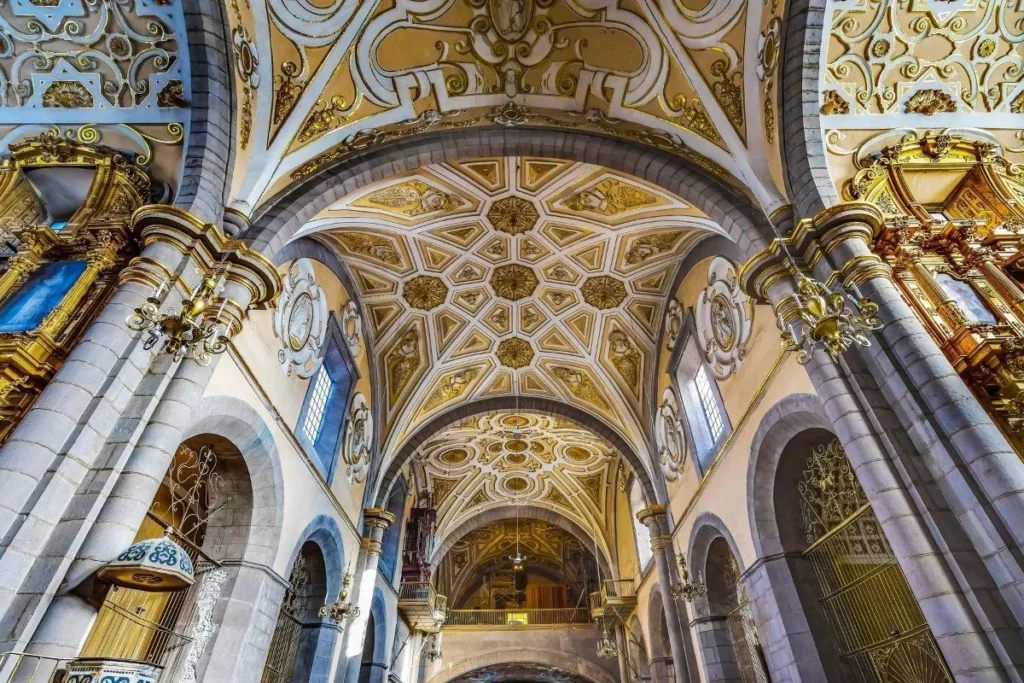
Feast Day
Our Lady of the Rosary Feast Day : October 7th
Mass Timing
Mon to Sat : 8:00 AM
1ST Friday : 7:00 PM Spanish First Friday / Primer Viernes
Saturday : 4:00 PM, 6:00 PM Spanish / Transmisión disponible en vivo
Sunday : 7:30 AM, 9:30 AM
Family Mass : 11:30 AM
Live stream : 5:00 PM
Contact Info
Address :
Av. 4 Pte., Historic Center of Puebla,
72000 Heroica Puebla de Zaragoza,
Pue., Mexico
Phone : +52 221 644 0524
Accommodations
Connectivities
Airway
Puebla International Airport to Capilla del Rosario, Templo de Santo Domingo distance Between 35 min (36.0 km) via Mexico – Puebla/Mexico Highway 150D

